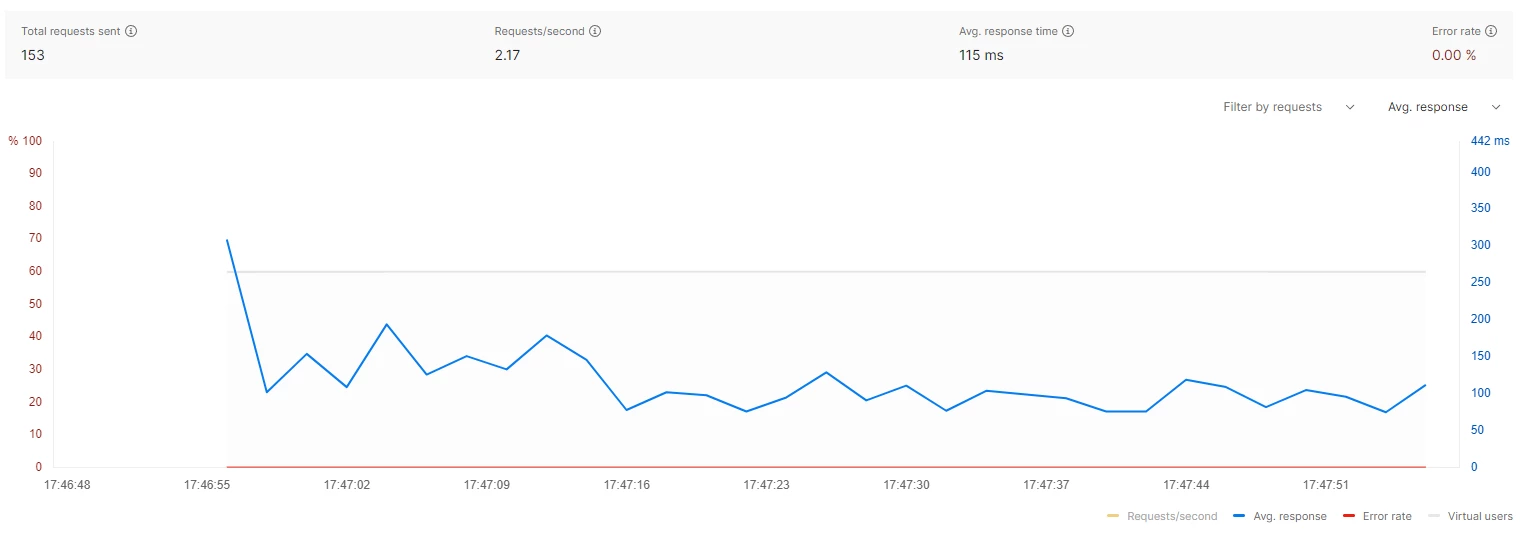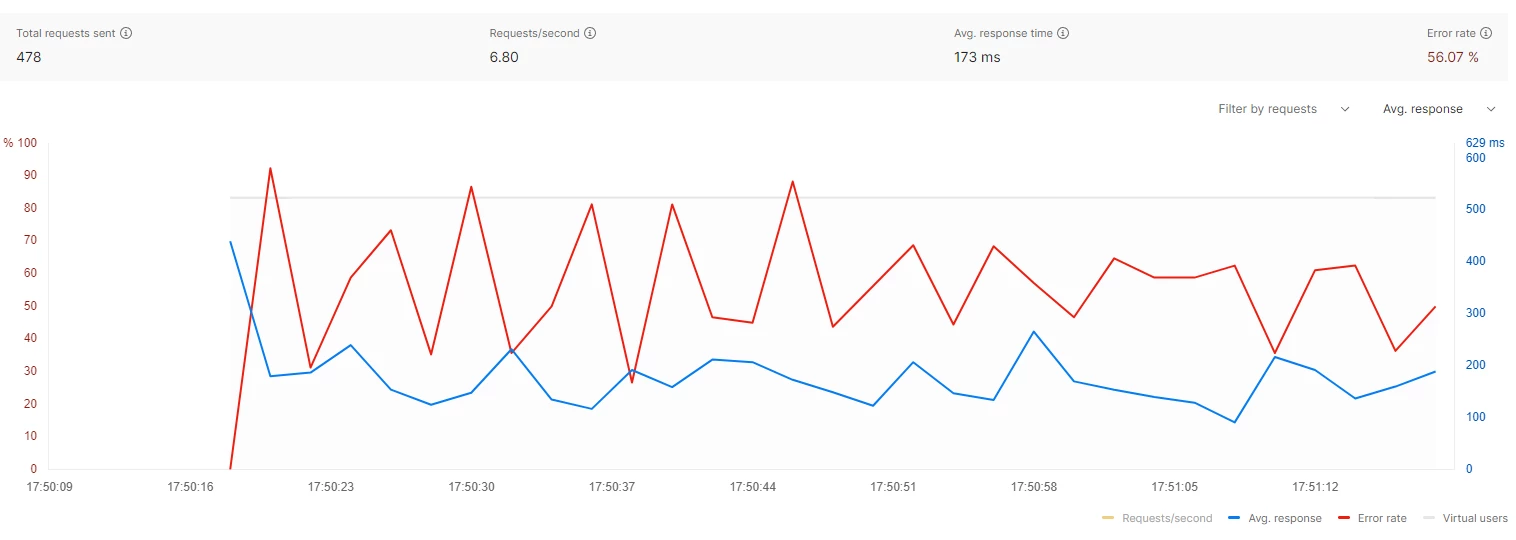We are developing a C# ASP.NET application in .NET 6 using U2 EntityFramework Core implementation.
My development license is 3 Users with 10 Devices.
If I understand this correctly, I should be able to open 30 connections.
I have a basic API loading an entity from the database.
These are the values I'm setting on the connection.
_u2ConnectionStringBuilder.Database = database;
_u2ConnectionStringBuilder.UserID = userId;
_u2ConnectionStringBuilder.Password = password;
_u2ConnectionStringBuilder.Server = server;
_u2ConnectionStringBuilder.PersistSecurityInfo = true;
_u2ConnectionStringBuilder.Pooling = false;
_u2ConnectionStringBuilder.ServerType = "UniVerse";
_u2ConnectionStringBuilder.RpcServiceType = "uvserver";
_u2ConnectionStringBuilder.AccessMode = "Uci";
_u2ConnectionStringBuilder.FirstNormalForm = false;
_u2ConnectionStringBuilder.ExpandMultiValueRows = true;
Then via Postman, I run performance tests with multiple users.
With 3 users I never run out of license.

But with 10 users it fails most of the time.

Questions
- With 3 users and 10 devices, should I be able to open 30 connections?
- What should I change to make use of the device license?
It is the same app, on the same machine with the same user.
@Rudolf Kotze
I think you are misunderstanding the term 'device' and how it is used within 'device licensing'. In short 'device licensing' allows you to make 10 connections from the same physical device and use one licence slot. The 11th connection from the same device will use another licence and the 12th another.
Some examples
Device 192.168.0.11 makes 10 connections this uses 1 Licence Slot.
Device 192.168.0.11 makes 11 connections this uses 2 Licence Slots.
Device 192.168.0.11 makes 12 connections this uses 3 Licence Slots
Device 192.168.0.11 makes 10 connections and Device 192.168.0.12 makes 10 connections this uses 2 Licence Slots.
Device 192.168.0.11 makes 11 connections and Device 192.168.0.12 makes 10 connections this uses 3 Licence Slots.
UniData device licensing
Device licensing enables you to have multiple UniData sessions from the same device, normally your PC, while consuming only one UniData license. UniData sessions can be connections through client/server middleware, such as UniData ODBC, UniObjects, UniObjects for Java, UniOLEDB, and InterCall, or they can be connections through the wIntegrate and/or SBClient telnet clients. These sessions can be established using one or more user ID and password combinations, but will only consume one UniData license as long as they come from the same physical device.
You specify the maximum number of concurrent sessions allowed from a single device when licensing UniData. The number of connections you can specify is 0-10, depending on the number for which you are licensed. You can connect more than ten times, but each connection over ten consumes a full UniData license. Device licensing is available on the UniData Workstation, Workgroup, Server and Enterprise editions.
How UniData counts licenses
Each of the following processes consumes one UniData license:A UniData session (executing udt).
- A UniData session (executing udt)
- A connection made to UniData through ODBC.
- A connection made to UniData through ObjectCall.
- Note: ObjectCall is not available beginning at UniData 8.1.0.
- Using bang (!) to execute another UniData session.
- Interactive phantom processes
- The Extensible Administration Tool (XAdmin) if you do not connect using the Connect As Admin option.
Device licensing enables you to have multiple UniData sessions from the same device, normally your PC, while consuming only one UniData license.
A phantom process does not consume a UniData license, unless the phantom process is interactive.








